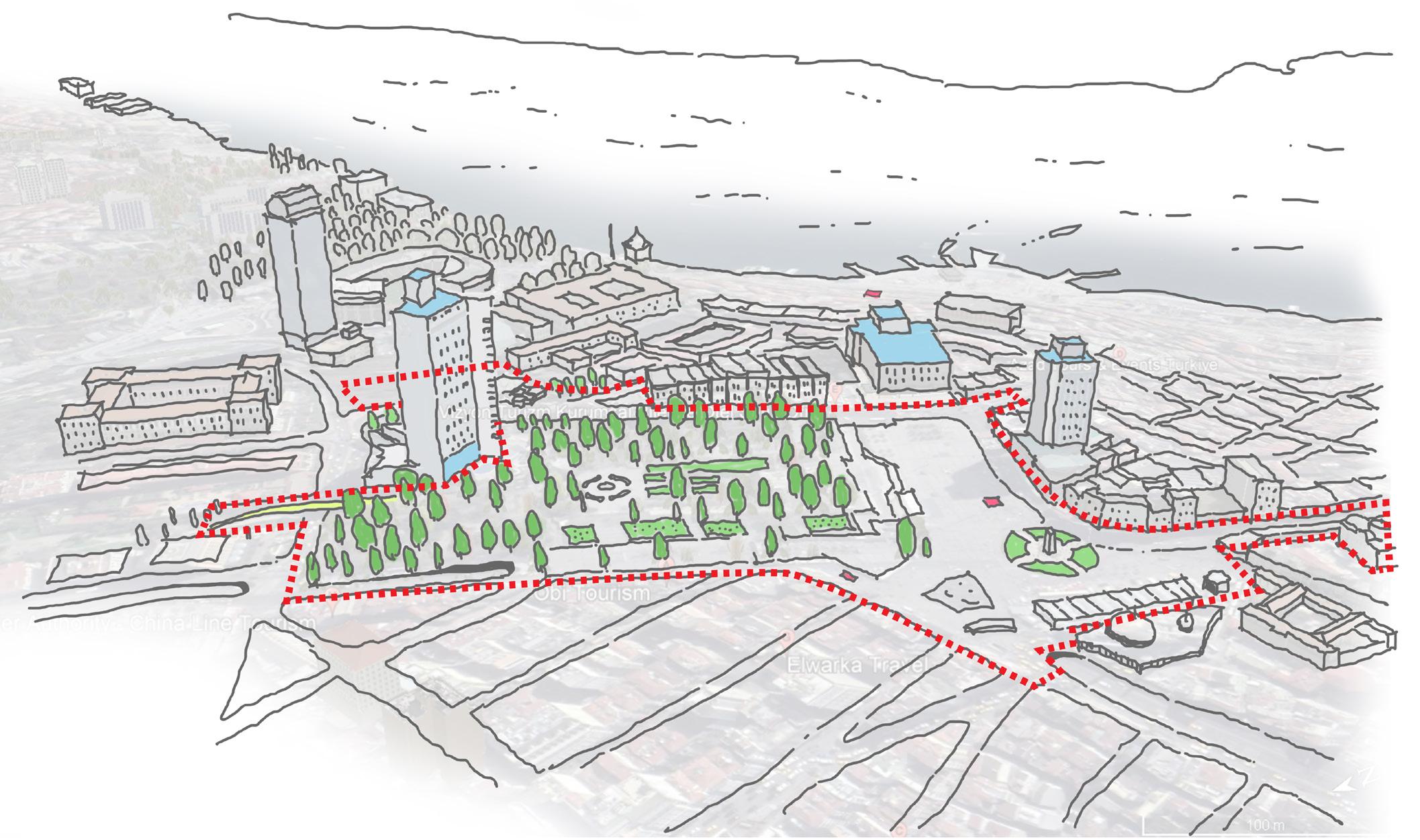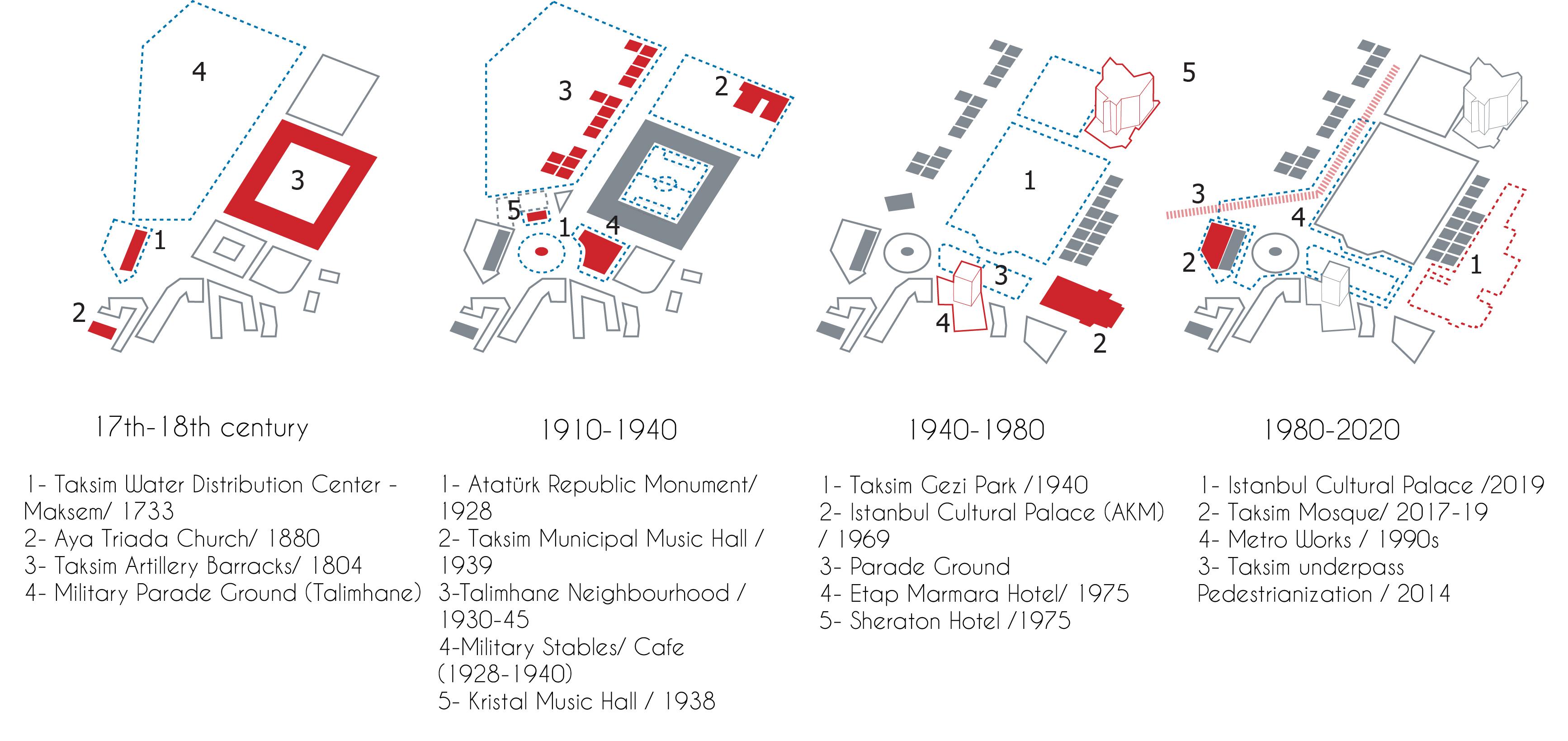
1 minute read
ANALYSIS
from 83_LZBN1985
Taksim Square is more than an “open space” in terms of construction and management, it has also a very strong social, economic and political character; as a flexible, open, urban space it is uniquely positioned to enable and host (un)programmed activity. Its variety goes beyond a “place of the Republic” to a meeting point for shopping, from its historical relevance to “access point” to the city. It is a place where most of the people feel free even if repression has taken place historically and recently. It is also a place that reflects political intentions and it is the materialization of a complexity of multifaceted aspects. However, during all these years of transformation, Taksim Square has been disintegrated with distinct physical and cultural territorial borders. A large part of the memory regarding space faced with the threat of extinction. All interventions for Taksim will affect the “living knowledge” of citizens, thus in our design approach we tried to find answers to the following questions:
DEFINITION OF THE STUDY AREA
Advertisement
• With its huge history of evolving identity, what should be the role of Taksim Square? • What are the pathways for a more sustainable Taksim? • How can we promote participation and transparency through our design?
Taksim Square is not an ordinary square; it is an urban canvas; the largest and the most known city square of Istanbul. It is located at the intersection of Istiklal, Sıraselviler, Gümüşsuyu and Cumhuriyet Street and Tarlabaşı Boulevard in Beyoğlu district. Gezi Park, The Monument of the Republic and its surroundings, Maksem and the Transportation Hub can be counted as main components of Taksim.
| Project Site
HISTORICAL DEVELOPMENT


